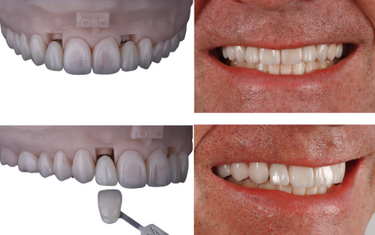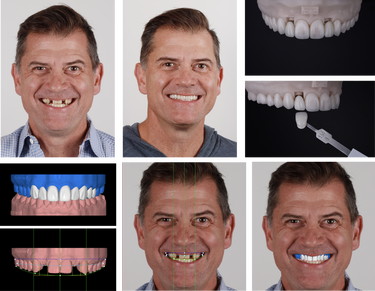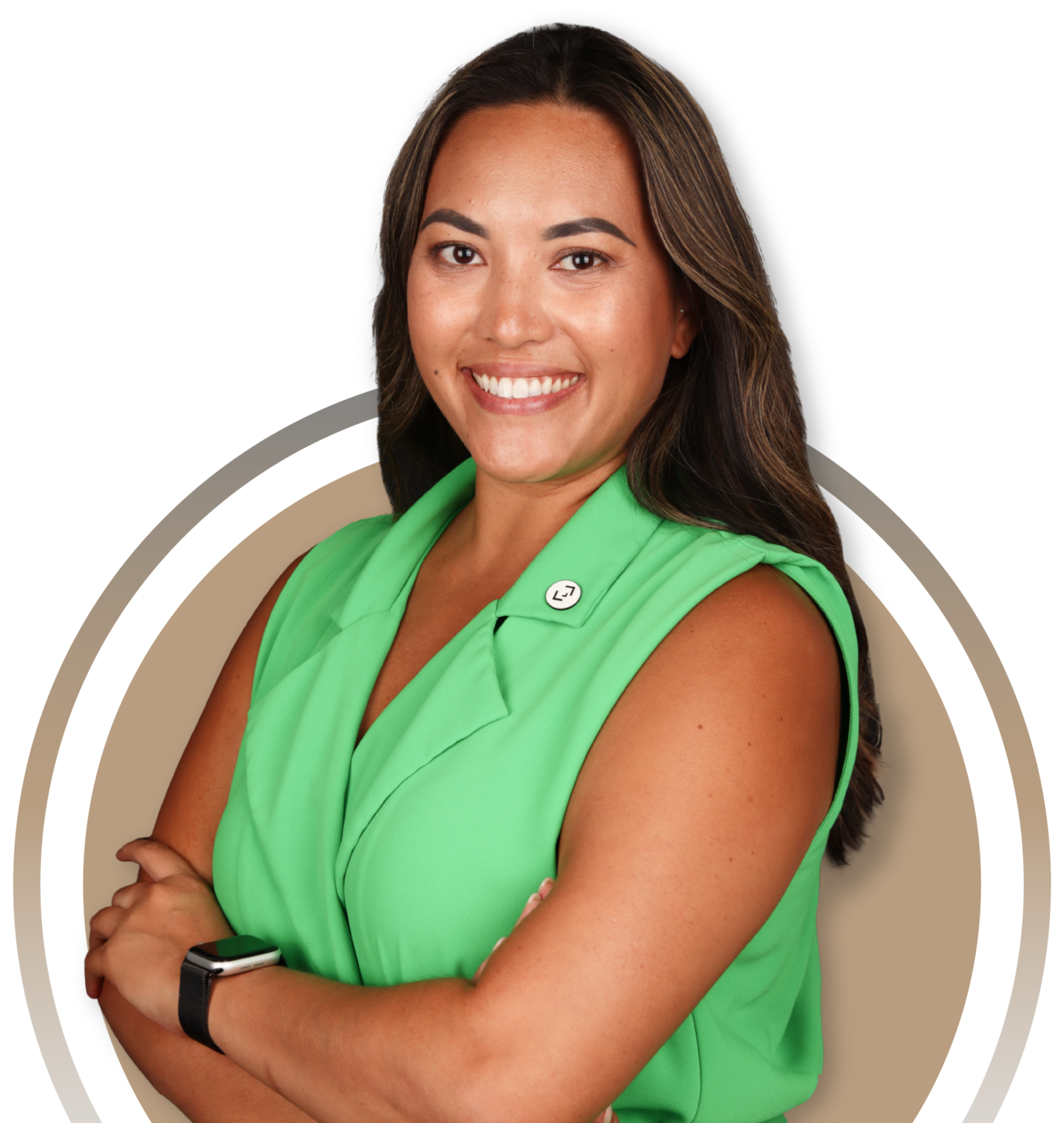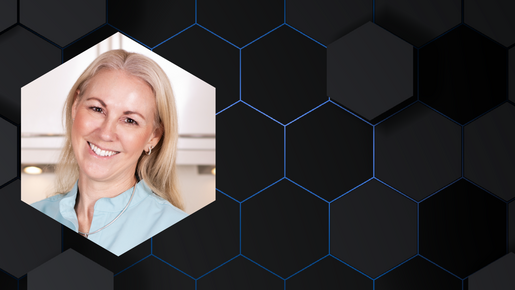Watch DSD Lab case analysis
A challenging case
Dr Charles Regalado, a certified DSD Clinic from Spokane, Washington, has practiced dentistry for over 30 years. He describes his practice as follows: “our office is known for the detailed care and attention our patients receive.” This particular case, which yielded very good results despite the challenges, certainly affirms this description.
“This patient had missing upper lateral incisors that had been restored with 30 year-old metal backed Maryland Bridges. He was looking for a natural smile,” Charles explains. The patient’s bridges had been removed by a surgeon who placed implants in the lateral locations. “His color was mixed with some more yellow canines and premolars, with lighter veneers on his centrals. The midline was canted and although he showed excessive tissue display on his upper left, this was not a concern for him as much as the overall natural appearance, better color balance and his desire to no longer have bridges,” he continues.
“This was a very challenging case, since we had two implant crowns and normally it's difficult to match the final shade with the esthetic between crowns over implants and over teeth preparations,” explains Dr Angelo Raphael from the DSD Lab who worked on this case.
The case was further challenged by the fact that the roots of central incisors and canines converged toward the missing lateral incisor spaces. “Orthodontics was attempted years before and again prior to final treatment. The orthodontist struggled to move the roots and it was thought there would not be an implant option. Finally there was enough space created to place 3.0 implants. The metal of the Maryland Bridges ranged from 3-5mm thick. The metal was also bonded quite securely,” he adds.
As time was becoming an issue at the prep appointment it was decided to leave the remaining metal, prepare the teeth and then remove the rest of the metal prior to cementation, which made seating much easier. “One other issue was once the veneers were removed on the centrals, the color of the preps on these teeth were surprisingly dark so this added a layer of difficulty,” he continues.

“The patient is a dentist and he understands quite well the amazing transformation that such natural restorations create. He was thrilled with the provisionals and the natural restorations matched the provisionals exceptionally.”

DSD Natural Restorations solution
“The final restorations were lithium disilicate,” Charles elaborates, “and the remaining metal was removed on the central incisor and right canine.” After removal, it was discovered that the natural enamel was present under the metal with only minimal intrusion into dentin in isolated areas. He explains that this made the seating very easy without the metal interfering and after the veneers were seated, any exposed dentin was filled with flowable composite. All the restorations were bonded under rubber dam and the implant crowns were placed last.
“The patient is a dentist and he understands quite well the amazing transformation that such natural restorations create,” he explains, adding that the patient was thrilled with the provisionals. The fact that the final restorations matched the provisionals exceptionally was something the patient was equally appreciative of, especially since traditionally there are major discrepancies between provisionals and final restorations.
“The patient is more than happy with the results and his daughter is about to become my next patient in a few weeks!” he comments.
When it comes to his collaboration with the DSD Lab on this case, Charles says he has learnt a great deal from the team. “I trust their recommendations of material and opacity and I appreciate their detailed communication,” he explains.
Apart from the natural-looking end result, the highlight of the case for Charles was the fit of the final restorations. “The marginal fit was ideal and there was no need for any interproximal adjustments, except for small refinements on the implants that were seated last,” he says.
“At the final seating, the patient commented that no bite adjustment was needed! Finding that hard to believe, I examined it thoroughly and did make some adjustments for ideal smooth function, but he was mostly correct because that process took me less than 12 minutes,” he explains.
“Overall, I’d rate the case highly and I’ve come to fully expect excellent margins and contacts,” Charles concludes.

"I’ve come to fully expect excellent margins and contacts with the DSD Lab team."








